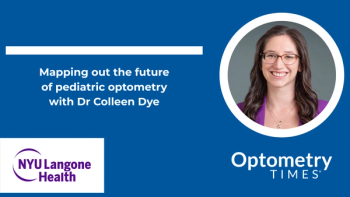
LumiThera announces top-line results from LIGHTSITE IIIB extension trial assessing the Valeda Light Delivery System
Valeda met the primary end point in the US LIGHTSIDE III trial, improving the best corrected visual acuity in patients for 24 months of >5 letters or equivalent to 1 line improvement on the eye chart, according to the company.
Medical device company LumiThera has announced topline results from its LIGHTSITE IIIB extension trial assessing the Valeda Light Delivery System in patients with dry (non-neovascular)
Valeda photobiomodulation (PBM) treatment is noninvasive and targets disease at the cellular level by delivering select wavelengths of light to enhance mitochondrial function to improve cellular energy production.2
“There is now a non-invasive treatment for dry AMD patients that can improve vision and address the disease earlier, before permanent vision loss,” said Clark Tedford, PhD, president and CEO of LumiThera, in the release. “The extended trial results demonstrate that Valeda is potentially modifying the trajectory of vision loss in dry AMD patients and can offer sustainable benefits over several years with continued treatment.”
Valeda met the primary end point in the US LIGHTSIDE III trial, improving the best corrected visual acuity in patients for 24 months of >5 letters or equivalent to 1 line improvement on the eye chart.1 Additionally, Valeda was shown to be safe and effective, according to the release.
“The primary end point of the trial was BCVA gain. After another 13 months of treatment, although the size of the study population of LIGHTSITE IIIB is relatively small, >60% of the subjects that received Valeda treatment in both studies were still showing a benefit in vision of over one line,” said Quan Dong Nguyen, MD, MSc, FARVO, FASRS, professor of Ophthalmology, Medicine, and Pediatrics at the Stanford University School of Medicine, in the release. “What is exciting is this is the first and only FDA-authorized treatment that can improve vision with extended benefits out to 4.5 years, suggesting that earlier and extended treatment provides the best outcomes.”
“The LIGHTSITE IIIB extension trial results extend 2-year pivotal trial vision benefits out to 4.5 years and showed an excellent safety profile,” stated David Boyer, MD, FASRS, of Retina Vitreous Associates Medical Group in Beverly Hills, California, in the release. “This is very exciting data for early to intermediate dry AMD patients. The 4.5-year follow-up included a 20-month no-treatment period between the 2 trials, wherein the patients still maintained some vision benefit from the earlier pivotal trial and recovered vision upon retreatment in the extension trial.”
Valeda is intended to treat patients with a best correct visual acuity of 20/32 through 20/70 and who have dry AMD as characterized by The presence of at least 3 medium drusen {> 63 μm and ≤ 125 μm in diameter), or large drusen {> 125μm in diameter), or non-central geographic atrophy, in addition to the absence of neovascular maculopathy or center-involving geographic atrophy.2
Valeda is shown to improve mean visual acuity of approximately 1 line of visual acuity (ETDRS) compared to those not receiving the treatment after approximately 2 years.2
References:
LumiThera’s LIGHTSITE IIIB extension trial topline results show extended vision improvement in dry AMD subjects. News release. LumiThera. May 8, 2025. Accessed May 12, 2025.
https://lumithera.com/news/lumitheras-lightsite-iiib-extension-trial-topline-results-show-extended-vision-improvement-in-dry-amd-subjects/ Introducing the Valeda Light Delivery System. Valeda. Accessed May 12, 2025.
https://myvaleda.com/
Newsletter
Want more insights like this? Subscribe to Optometry Times and get clinical pearls and practice tips delivered straight to your inbox.



















































.png)


